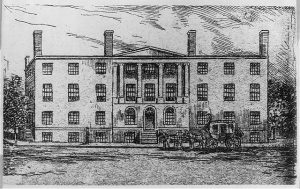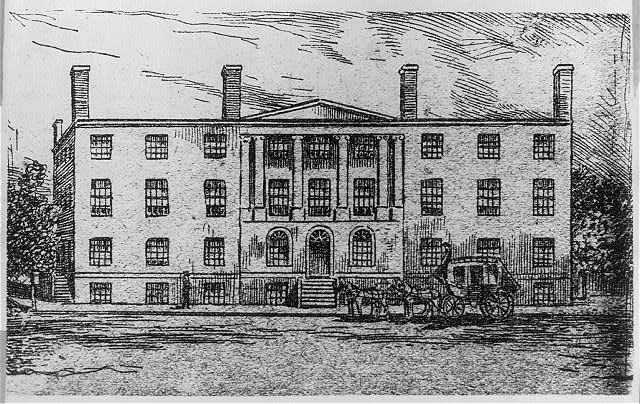The Fascinating History of Patent Filing: From Quill Pens to Digital Submissions
The history of patent filing in the United States is a journey through time, technology, and innovation. From its humble beginnings in 1790 to the digital age of today, the process of how inventors protect their ideas has evolved dramatically. Throughout this evolution, one constant remains: the critical role of skilled representation in navigating the patent system. From Thomas Jefferson examining the first patents to modern examiners sifting through millions of applications, the process of how inventors protect their ideas has changed dramatically. Yet, the importance of precise language, thorough documentation, and strategic claim drafting in patent filing is as crucial now as it was at the dawn of the U.S. Patent Office.
The Early Days of Patent Filing

The history of patent filing in the United States began with the Patent Act of 1790. In those early days, inventors had to submit their applications directly to the Patent Board, which consisted of the Secretary of State, the Secretary of War, and the Attorney General. The process was cumbersome and time-consuming, with each application requiring a personal review by these high-ranking officials.Interestingly, the first U.S. patent was granted to Samuel Hopkins on July 31, 1790, for a process of making potash. Hopkins’ application, like all others in that era, was handwritten and accompanied by detailed drawings. This highlights an important aspect of the history of patent filing: the quality of the application’s presentation could significantly impact its success.
The Patent Office Takes Shape
As the number of patent applications grew, so did the need for a dedicated office to handle them. In 1802, the Patent Office was established as a distinct unit within the Department of State. This marked a significant milestone in the history of patent filing, as it provided a centralized location for inventors to submit their applications.The Patent Office’s physical location played a crucial role in the filing process. Initially housed in various temporary locations, it found a permanent home in 1840 in the Patent Office Building. This impressive Greek Revival structure, now home to the Smithsonian American Art Museum and the National Portrait Gallery, served as a symbol of American innovation and the importance of patent protection.
The Fire of 1836 and Its Impact
A pivotal moment in the history of patent filing came on December 15, 1836, when a fire destroyed the Patent Office and nearly all of its records. This disaster led to significant changes in how patents were filed and recorded. The Patent Act of 1836 introduced a numbering system for patents and required more detailed specifications and claims. The patents filed between July 1790 to July 1836 are referred to as the X-Patents because no copies were made of the early patents, the number is unknown. After the fire, the Patent Office started numbering their patents, with patent number 1 issued on July 13, 1986. This event underscores why the method of filing a patent has always been as important as the invention itself. The loss of so many records highlighted the need for thorough documentation and proper filing procedures, a lesson that remains relevant today.
The Rise of Patent Attorneys
As the patent system became more complex, the role of patent attorneys grew in importance. By the mid-19th century, inventors increasingly sought the expertise of legal professionals to navigate the intricacies of patent law and filing procedures. This trend has continued to the present day, with experienced patent attorneys playing a crucial role in securing and protecting intellectual property rights.
Technological Advancements in Filing
The history of patent filing is also a history of technological progress. From handwritten applications to typewritten documents, and eventually to digital submissions, each advancement has changed how inventors interact with the Patent Office.In 1980, the Patent Office introduced the Automated Patent System, marking the beginning of the digital era in patent filing. This system revolutionized how patent searches were conducted and how applications were processed, making the entire process more efficient and accessible.
The Modern Era of Patent Filing
Today, the United States Patent and Trademark Office (USPTO) offers a fully electronic filing system. While this has streamlined the process in many ways, it has also introduced new complexities. The importance of precise language, thorough documentation, and strategic claim drafting remains as crucial as ever.In the digital age, the history of patent filing teaches us that while the tools have changed, the fundamental principles remain the same. An experienced patent attorney’s expertise in navigating these systems and crafting compelling applications is invaluable.
Why an Experienced Patent Attorney Matters
Throughout the history of patent filing, one constant has been the advantage of having knowledgeable representation. Here’s why working with an experienced patent attorney is crucial:
- Understanding of Patent Law: Patent laws are complex and constantly evolving. An experienced attorney stays up-to-date with these changes.
- Strategic Application Drafting: Crafting a patent application that provides broad protection while meeting all legal requirements is an art form honed through years of practice.
- Navigation of USPTO Procedures: The filing process involves numerous deadlines and procedural requirements. An experienced attorney ensures compliance at every step.
- Prior Art Searches: Thorough searches for existing patents and publications are crucial. Experienced attorneys know how to conduct comprehensive searches and interpret the results.
- Prosecution Expertise: If an application faces rejection, an experienced attorney knows how to respond effectively to office actions and negotiate with patent examiners.
Conclusion: Honoring the Past, Embracing the Future
The history of patent filing is a testament to human ingenuity, not just in the inventions themselves, but in the systems created to protect them. From the quill-penned applications of the 18th century to today’s digital submissions, the process has continually evolved. Yet, the core principle remains: how you file a patent is just as important as what you’re filing.As we look to the future, the role of experienced patent attorneys in navigating this complex landscape becomes ever more critical. Their expertise ensures that your innovative ideas receive the fullest protection possible, continuing a tradition that has been vital throughout the history of patent filing.Are you ready to add your invention to the rich tapestry of American innovation? Don’t leave your intellectual property to chance. Contact our experienced patent attorneys today to ensure your ideas are protected with the same care and precision that has defined the history of patent filing for over two centuries. Let us help you make history with your innovation!


